18 Canned Soups With Harmful Ingredients You Might Want To Skip
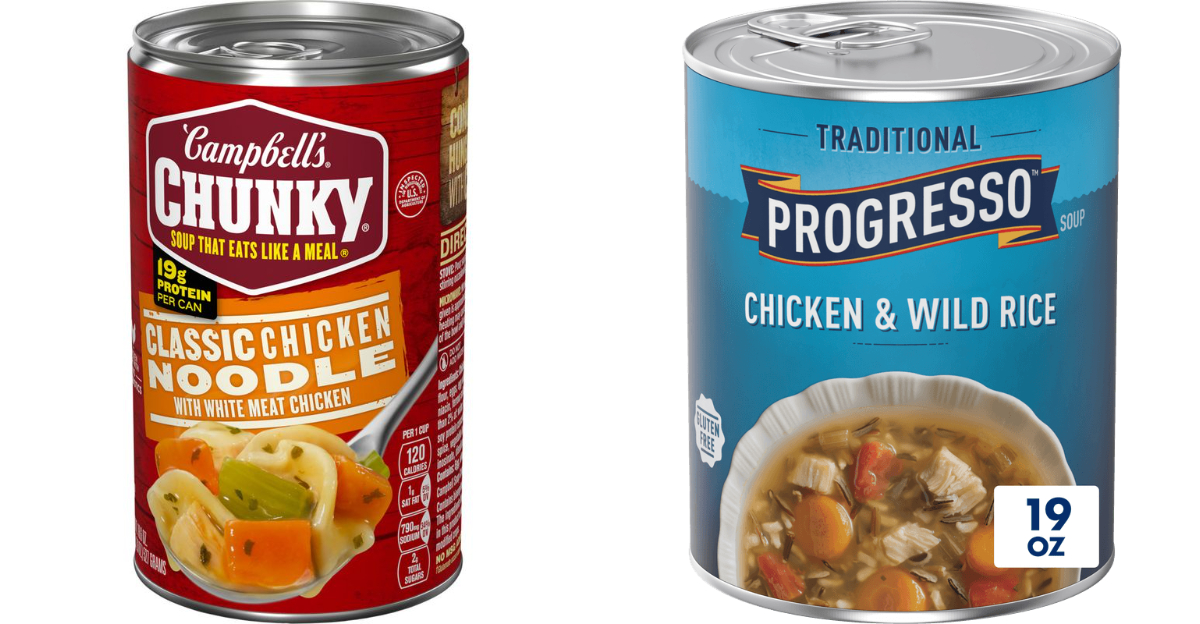
Canned soup can be a lifesaver on a busy night—but not all soups are created equal. Some are packed with sky-high sodium, questionable additives, artificial colors, or even hidden sugars that sneak in where they don’t belong. Here are 18 canned soups that might deserve a second glance before they end up in your cart.
1. Campbell’s Chunky Classic Chicken Noodle
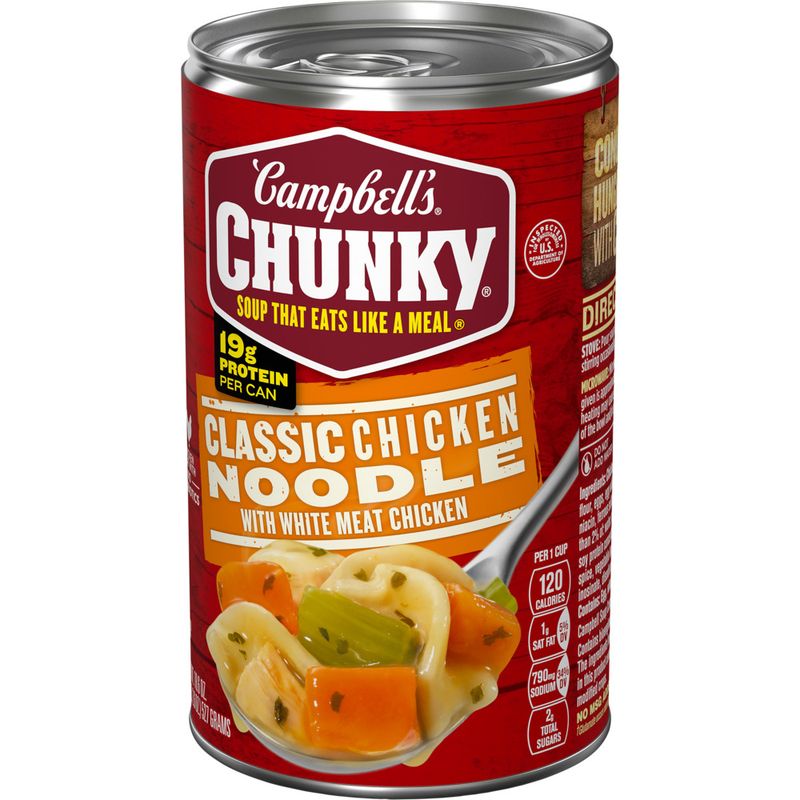
With nearly 900mg of sodium per serving, this classic isn’t doing your heart any favors. Saltiness aside, it contains MSG, a flavor enhancer some prefer to avoid due to potential health concerns. Then there’s the added sugar, making this a questionable choice for a healthy meal. Imagine the comfort of chicken noodle soup, now think twice! It’s a convenient meal, but at what cost to your health? While nostalgia might pull you in, considering the ingredients may make you pause. In a world where convenience often trumps nutrition, this soup stands as a cautionary tale.
2. Progresso Traditional Chicken & Wild Rice
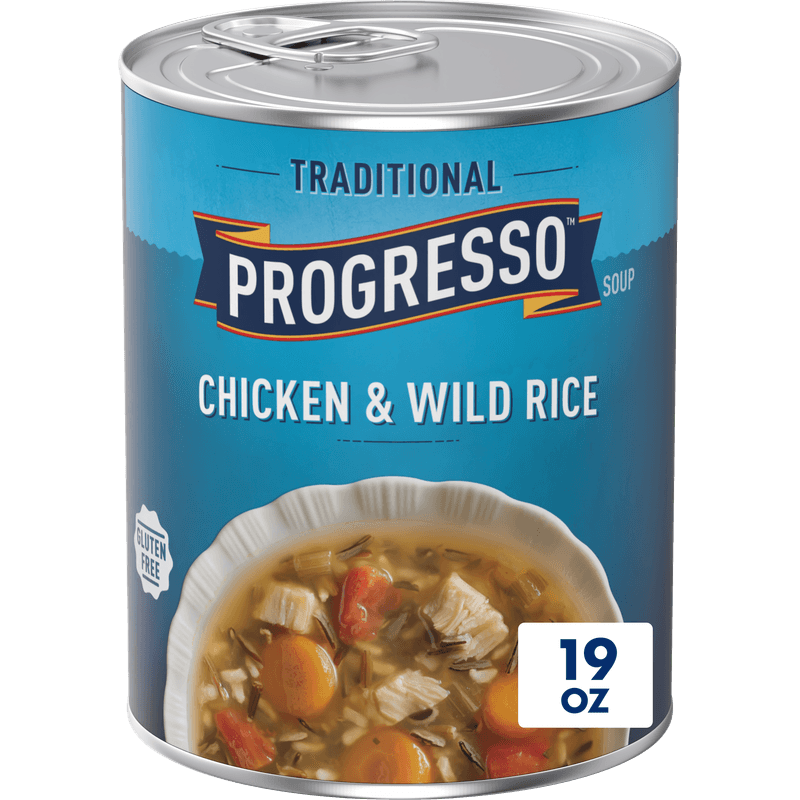
High in sodium and containing potassium chloride, this soup is not as benign as it seems. Potassium chloride, often a salt substitute, can affect blood pressure—a concern for some consumers. The comforting blend of chicken and wild rice seems inviting until you delve into the ingredient list. While the soup aims for a wholesome image, the reality is less clear-cut. It’s easy to reach for this can, but scrutinizing the label might reveal hidden pitfalls. The appeal of a simple meal needs to be weighed against the potential health impacts of its components.
3. Great Value Cream of Mushroom

The Walmart-brand version often flies under the radar, yet contains modified food starch and soy protein concentrate. These fillers, while common, are ultra-processed and less than ideal for those seeking wholesome options. Imagine a creamy mushroom soup, now reconsider with these additives in mind. The allure of affordability and convenience often masks the less savory aspects. As you ponder your soup selection, remember that sometimes the brand name isn’t the only factor to consider. Dive into your pantry with a critical eye, and choose wisely.
4. Campbell’s Condensed Tomato Soup
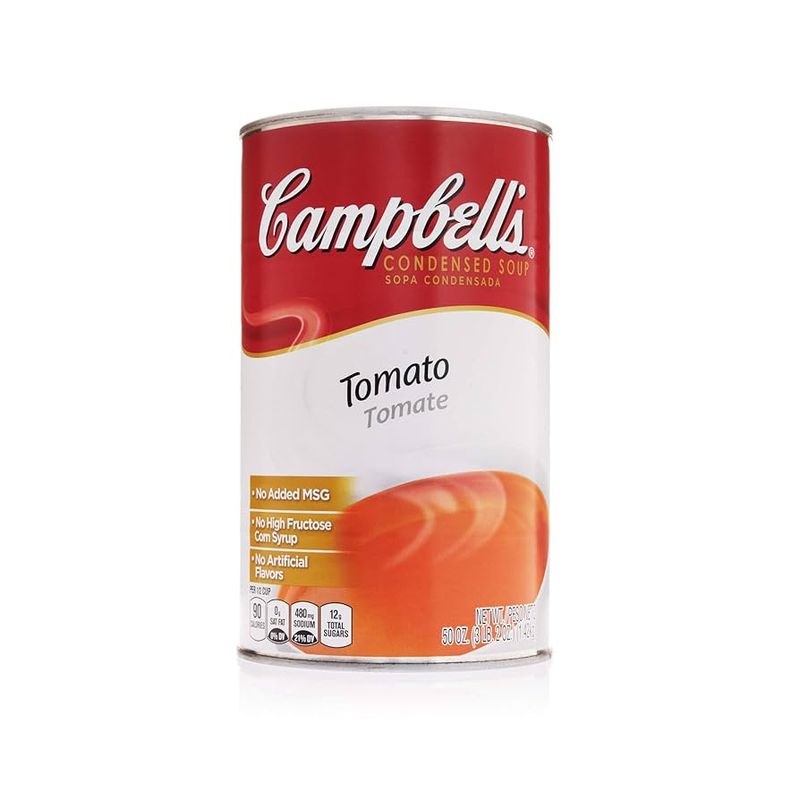
This pantry staple contains high fructose corn syrup and more sugar than you’d expect—around 12g per serving. A childhood favorite for many, yet the sugar content surprises those paying attention to dietary details. Imagine a warm bowl of tomato soup; now consider the sugars lurking within. While the classic taste is familiar, the health implications may not be. As you stir the pot, ponder the balance between flavor and nutrition. In the realm of tomato soups, this one stands out not just for taste, but for its sweet secrets.
5. Amy’s Organic Lentil Vegetable (Low Fat)
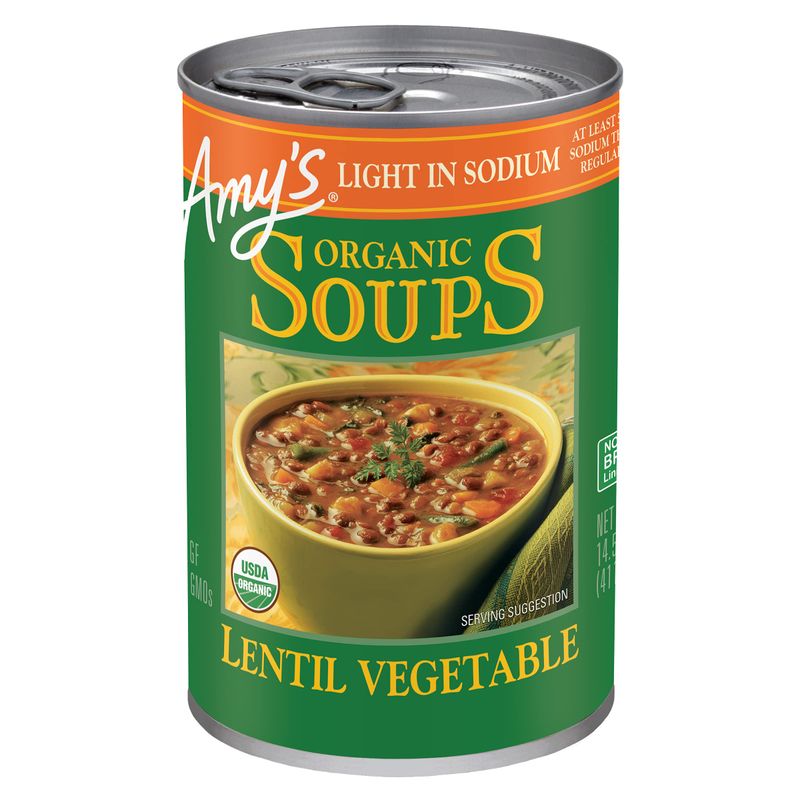
Despite being organic, this soup has 1,130mg of sodium per serving—almost half your daily recommended limit. The organic label might comfort some, yet the sodium content tells a different story. Envision a hearty lentil vegetable soup; now weigh the saltiness within. Organic doesn’t always mean healthy, as this can illustrates. The notion of eating clean is challenged by the sheer sodium present. As you scan the shelves for healthier options, consider that labels can be deceiving. This soup might be organic, but it’s far from guilt-free.
6. Healthy Choice Chicken with Rice Soup
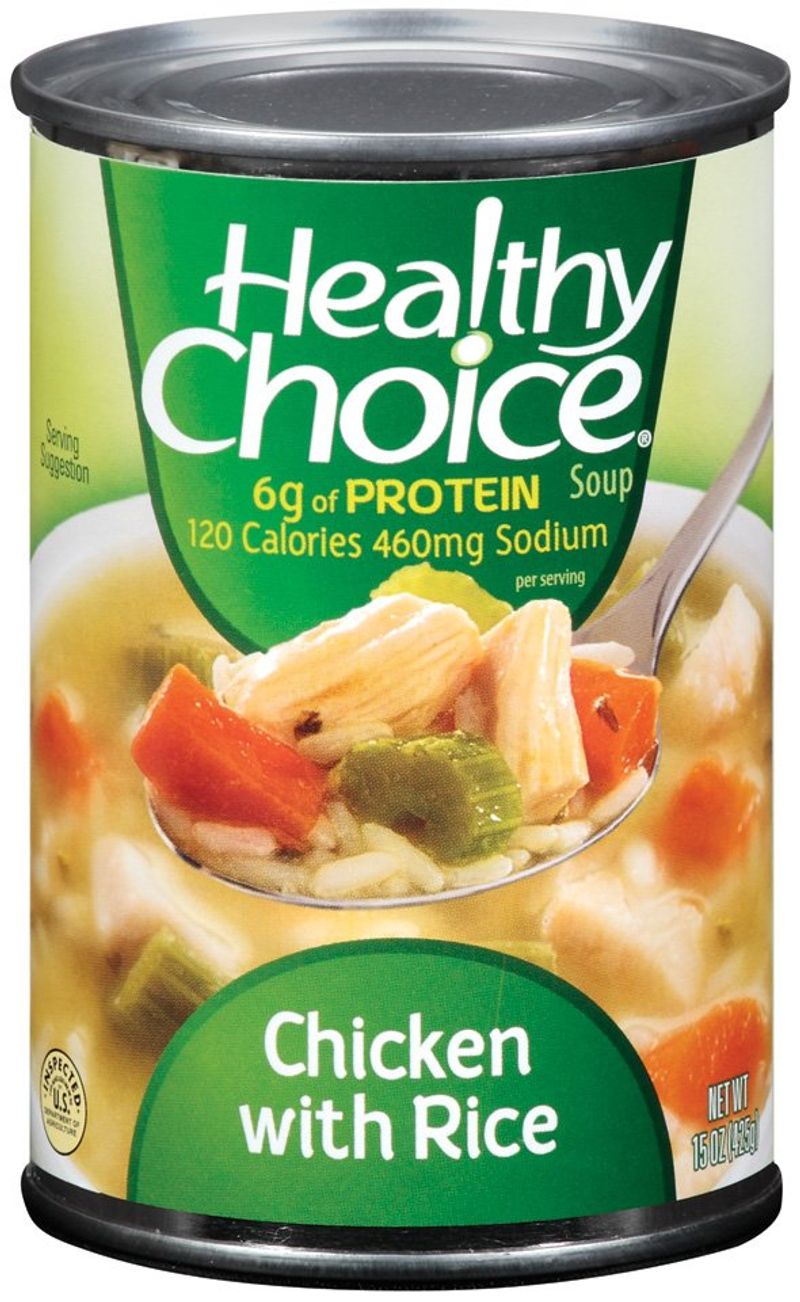
The name is misleading—this soup is loaded with sodium phosphate and soy protein isolate, both overprocessed additives. The suggestion of health in its name might be comforting, but the ingredients reveal another side. Picture a bowl of chicken with rice; now reconsider its healthiness with these additives. While convenient, this soup challenges the notion of a healthy choice. The road to well-being is often paved with misleading labels, reminding us to read beyond the front of the can. This soup, in particular, requires a discerning eye.
7. Campbell’s Cream of Chicken Soup
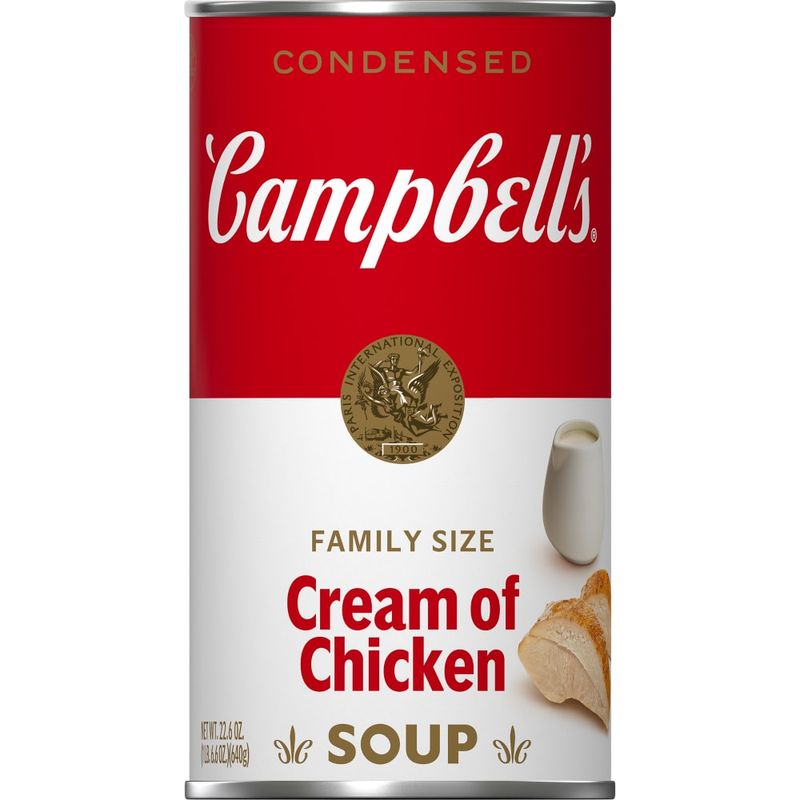
Loaded with monosodium glutamate (MSG), vegetable oils, and modified food starch, this soup is a classic example of processed convenience. The creamy texture invites you to indulge, yet the additives tell a more complicated story. Imagine a comforting cream of chicken soup; now consider the artificial ingredients within. While satisfying in the moment, the long-term effects might make you think twice. The convenience of canned soup often masks the trade-offs in ingredient quality. This particular can serves as a reminder to prioritize what goes into your meals.
8. Progresso Loaded Baked Potato with Bacon
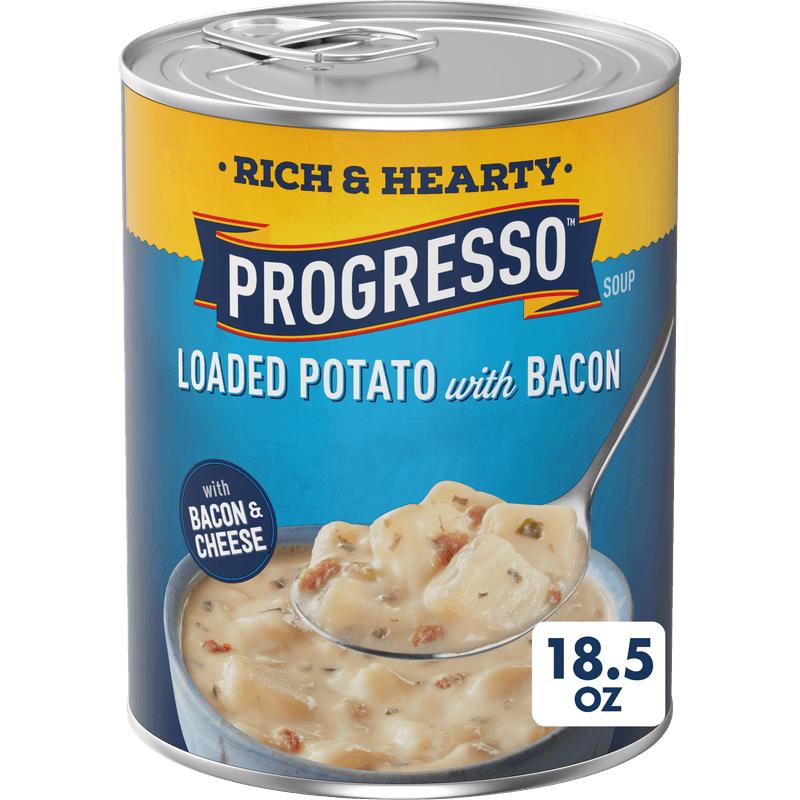
Cream-based and full of sodium, preservatives, and saturated fat—a triple whammy for your arteries. The thought of baked potato with bacon might make your mouth water, but your heart may not be as thrilled. Consider the indulgence of creamy soup, now factor in the health drawbacks. While delicious, the soup’s nutritional profile paints a less rosy picture. The balance between taste and health is tricky here, often tipping toward indulgence over well-being. It’s easy to reach for, yet harder to justify when considering nutritional content.
9. Kroger Hearty Chicken Noodle
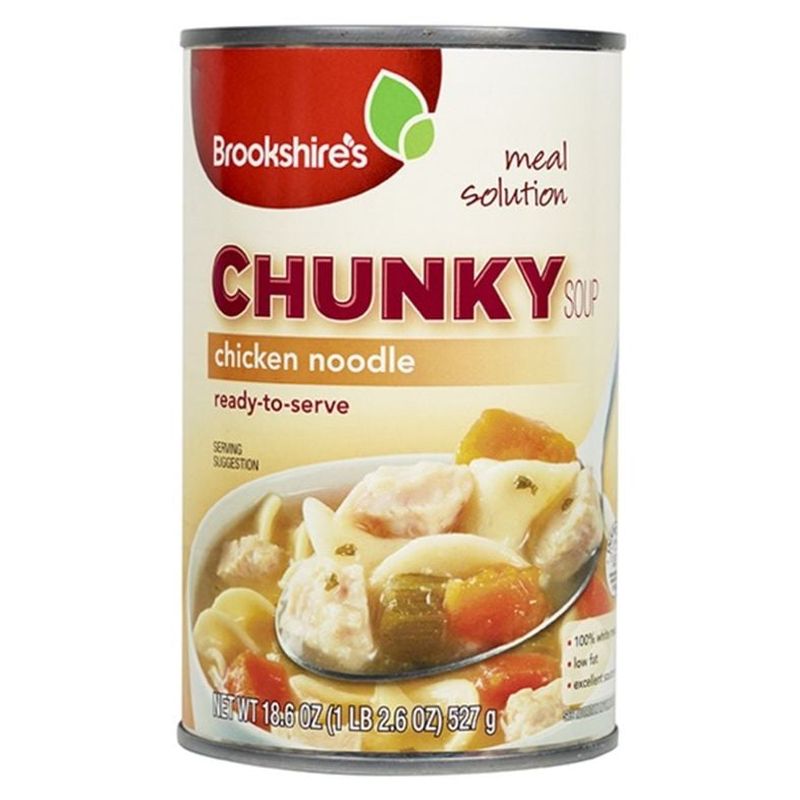
Contains disodium inosinate and guanylate, artificial flavor enhancers often paired with MSG. The hearty image of chicken noodle soup may entice, but these enhancers suggest a different narrative. Imagine the comfort of a warm bowl; now think about the artificial flavors within. While the soup aims to satisfy, the ingredients might tell a different story. The allure of flavor is undeniable, yet it comes with health considerations. As you contemplate your next meal, remember that authenticity in taste starts with authenticity in ingredients.
10. Great Value Split Pea with Ham

Has a sky-high sodium count and carrageenan, an additive that may cause digestive issues in sensitive individuals. The comforting thought of split pea with ham is appealing, yet the ingredients add a layer of concern. Picture a hearty soup; now consider the potential digestive discomforts. As with many canned soups, the balance between flavor and health is delicate. The simplicity of split pea belies the complexity of its makeup. For those sensitive to additives, this can serves as a gentle reminder to read the labels carefully.
11. Wolfgang Puck Organic Tomato Basil Bisque
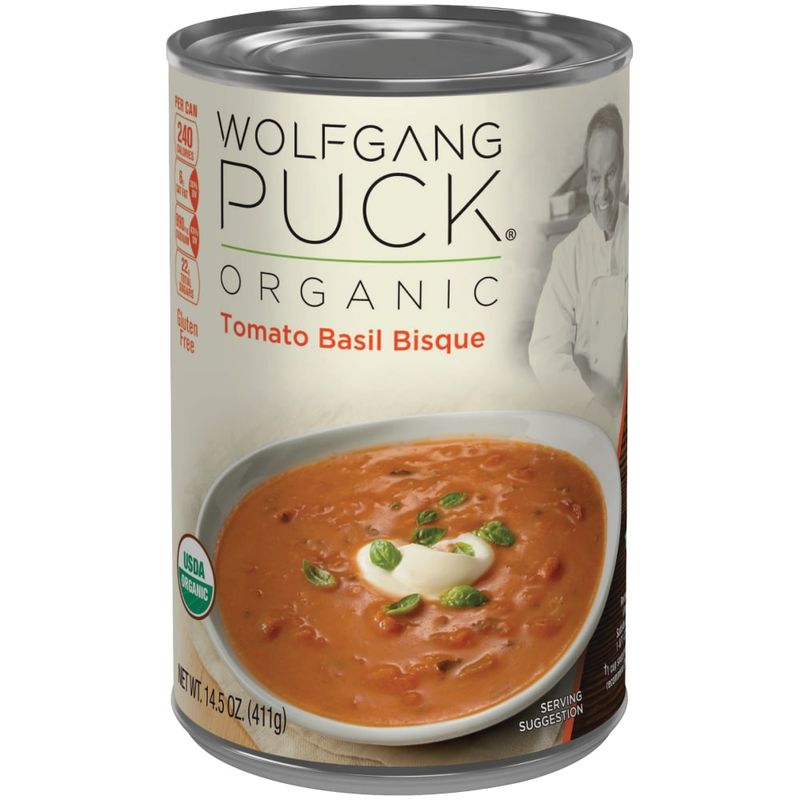
Organic, yes—but with added sugar, canola oil, and natural flavors with unclear sourcing. The sophistication of tomato basil bisque is undeniable, yet its ingredients could tell a more nuanced story. Envision a luxurious soup; now ponder the hidden sugars. While the organic label offers comfort, the reality may be more complex. The juxtaposition of organic and processed is apparent here, challenging assumptions about health. As you consider your soup choices, remember that not all ingredients are created equal. This can offers a taste of sophistication, but with caveats.
12. Pacific Foods Creamy Roasted Red Pepper & Tomato
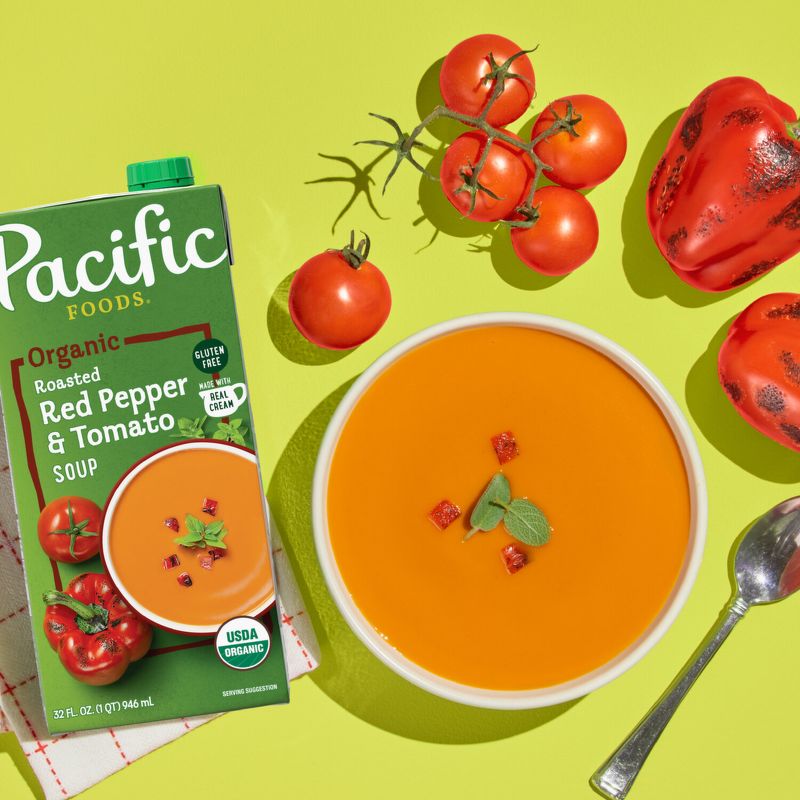
Tastes amazing, but contains evaporated cane juice and stabilizers you might not expect from an organic brand. The rich taste of roasted red pepper and tomato is hard to resist, yet the ingredients warrant a closer look. Imagine savoring this creamy soup; now consider the added sugars. While organic, the presence of stabilizers might surprise those seeking purity. The balance between taste and integrity is delicate, with each spoonful offering a reminder of the complexities of food labeling. This soup, delicious as it is, prompts a moment of reflection on ingredient integrity.
13. Hormel Chili with Beans
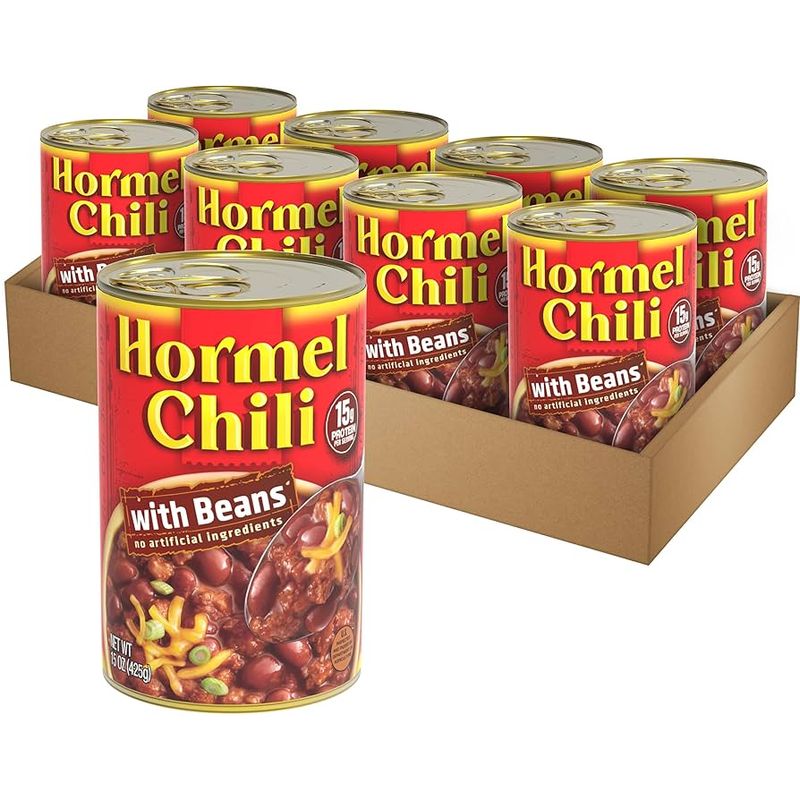
Often used like a soup, this chili is loaded with preservatives, saturated fat, and high sodium levels. The hearty warmth of chili with beans is undeniable, but health considerations come into play. Picture a robust bowl; now think about the preservatives within. While a convenient option, the nutritional profile might give pause to the health-conscious. The harmony between flavor and health can be elusive, often veering towards indulgence over well-being. This can, while tempting, serves as a reminder to balance convenience with nutritional mindfulness.
14. Trader Joe’s Organic Lentil Vegetable
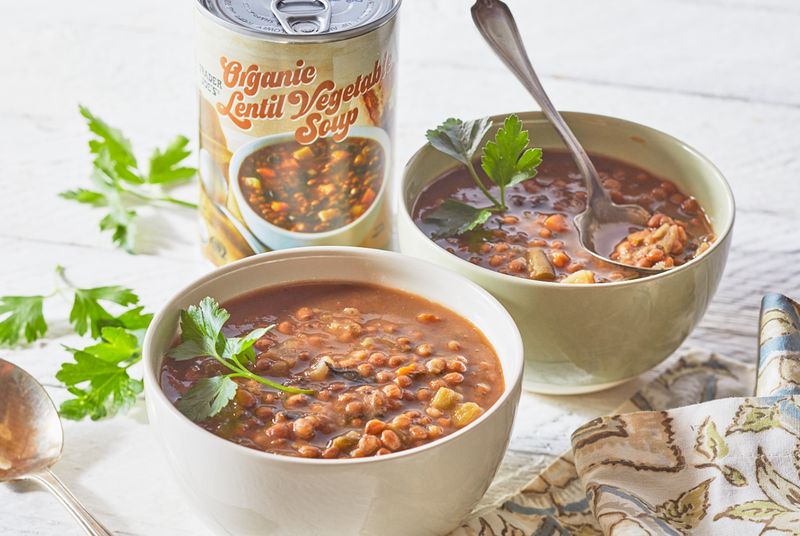
Healthier than some, but still clocks in with over 600mg of sodium per cup, which adds up fast. The wholesome image of lentil vegetable soup is inviting, yet the sodium content might prompt a second look. Imagine a nourishing bowl; now consider the saltiness hidden within. While the organic label suggests health, the reality may be more complex. The challenge of balancing flavor and nutrition is evident here, where organic doesn’t equate to low sodium. This soup offers a blend of health and indulgence, encouraging careful consideration of dietary choices.
15. Annie’s Organic Chicken Noodle
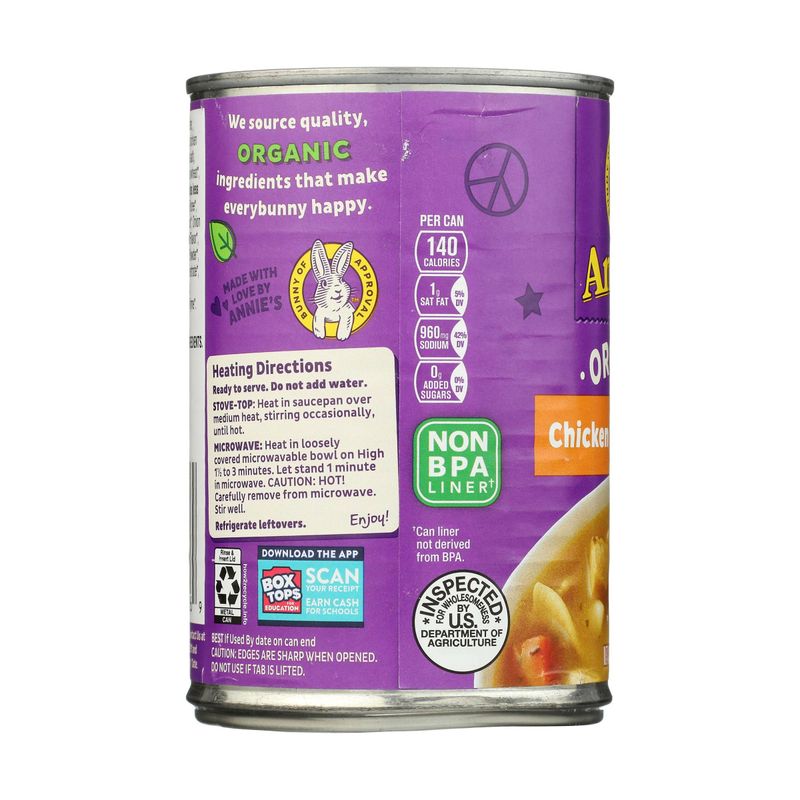
Better ingredients, but still includes yeast extract (a flavor enhancer) and concentrated cane juice. The comfort of chicken noodle soup is universally recognized, yet additives remain a concern. Picture a soothing bowl; now think about the flavor enhancers. Even with organic credentials, the presence of cane juice raises questions. The delicate dance between taste and purity is evident here, suggesting that organic doesn’t mean additive-free. As you explore your soup options, remember that ingredient lists can reveal surprising details. This can offers comfort, but with nuances to consider.
16. Campbell’s Homestyle New England Clam Chowder
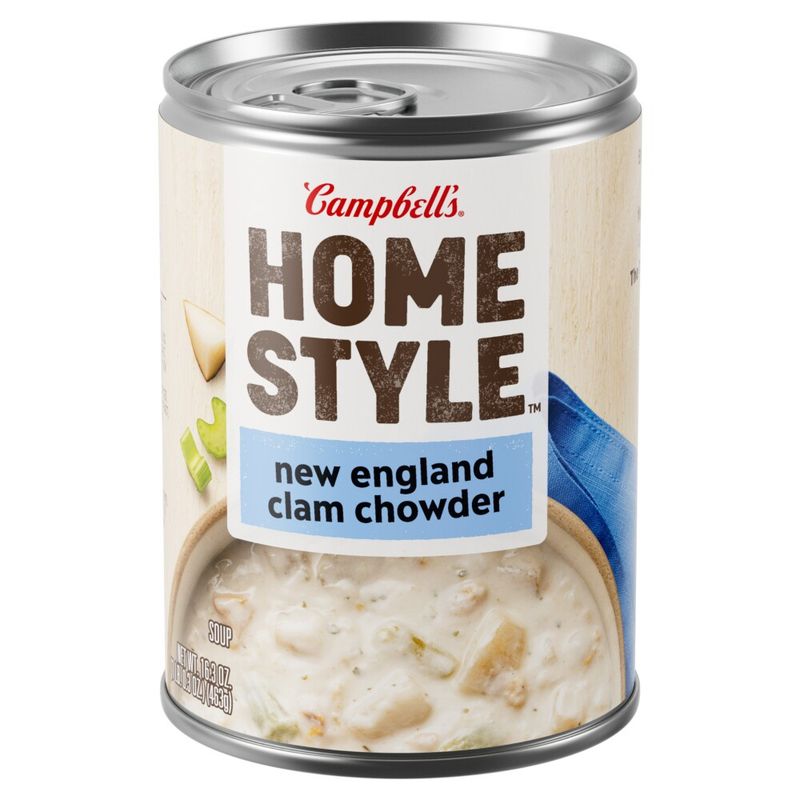
Creamy, comforting—and full of sodium tripolyphosphate and high saturated fat. The allure of New England clam chowder is timeless, yet the ingredients might prompt caution. Imagine indulging in a rich bowl; now ponder the additives. While the taste is classic, the health impacts are less so. The journey between flavor and nutrition is fraught with considerations, often prioritizing indulgence. This soup stands as a testament to the balance between taste and health, urging a closer inspection of ingredients for those mindful of dietary impacts.
17. Progresso Hearty Italian-Style Wedding Soup
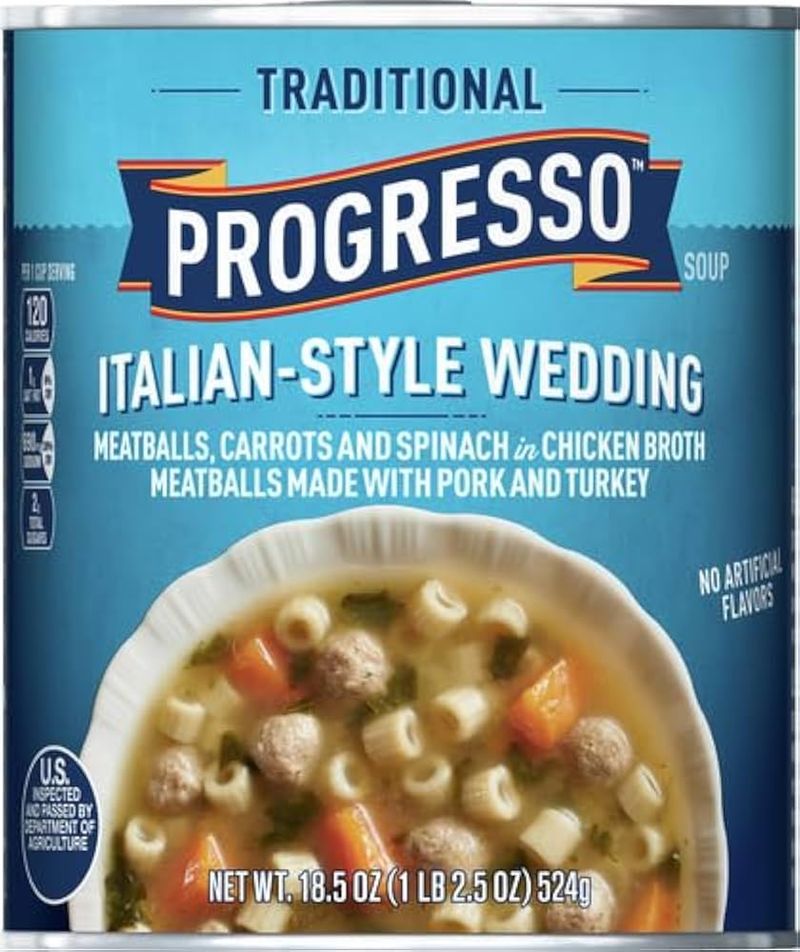
Features mechanically separated chicken, disodium EDTA, and a long list of preservatives. The romantic notion of Italian wedding soup is appealing, but the ingredients might tell a less idyllic story. Picture a celebratory bowl; now consider the preservatives within. The soup’s nutritional profile may not align with the charm of its name. Balancing tradition with modern dietary concerns can be tricky, often revealing unexpected ingredients. This can stands as a reminder to weigh the pros and cons of taste versus health. The allure of tradition meets the reality of modern processing in this can.
18. Chef Boyardee Beef Ravioli
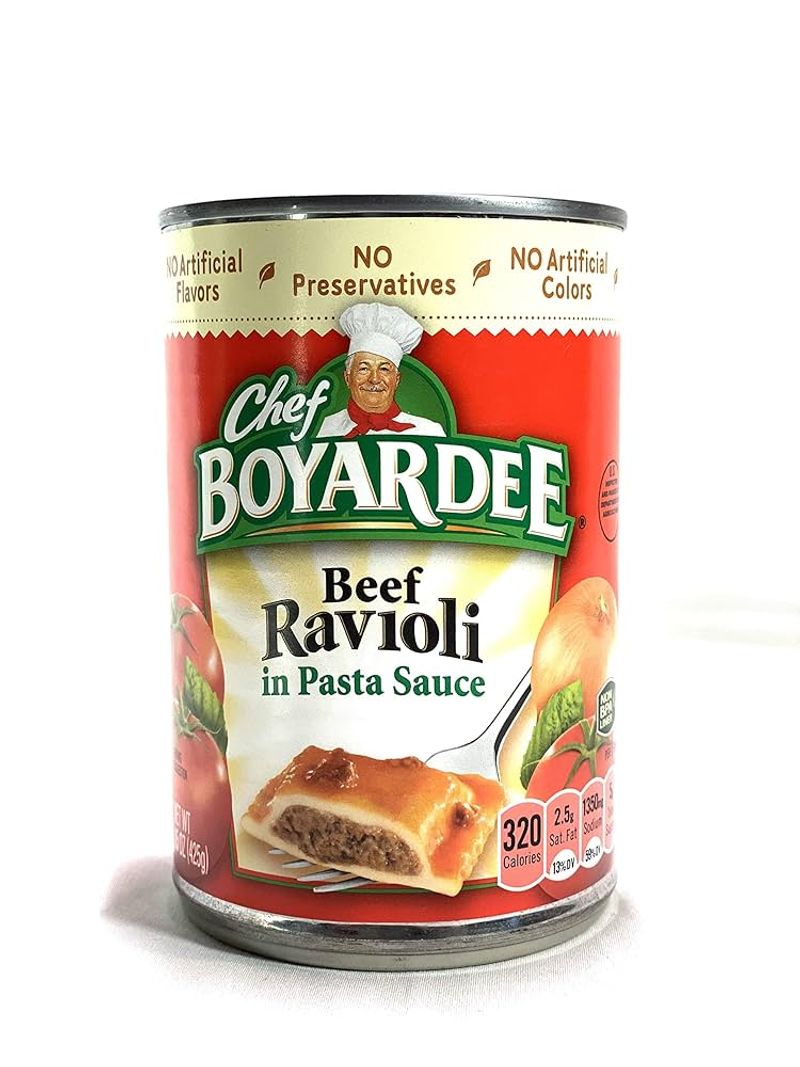
Technically a soup-adjacent meal, this is often eaten like soup but packed with corn syrup, caramel color, and questionable beef content. The nostalgia of beef ravioli is strong, yet the ingredients might prompt reconsideration. Picture a comforting bowl; now think about the additives hidden within. While convenient and reminiscent of simpler times, the ingredient list tells a more complex story. The tension between childhood flavors and adult health awareness is apparent here. This can, while beloved by many, serves as a reminder to assess both taste and nutritional integrity.
